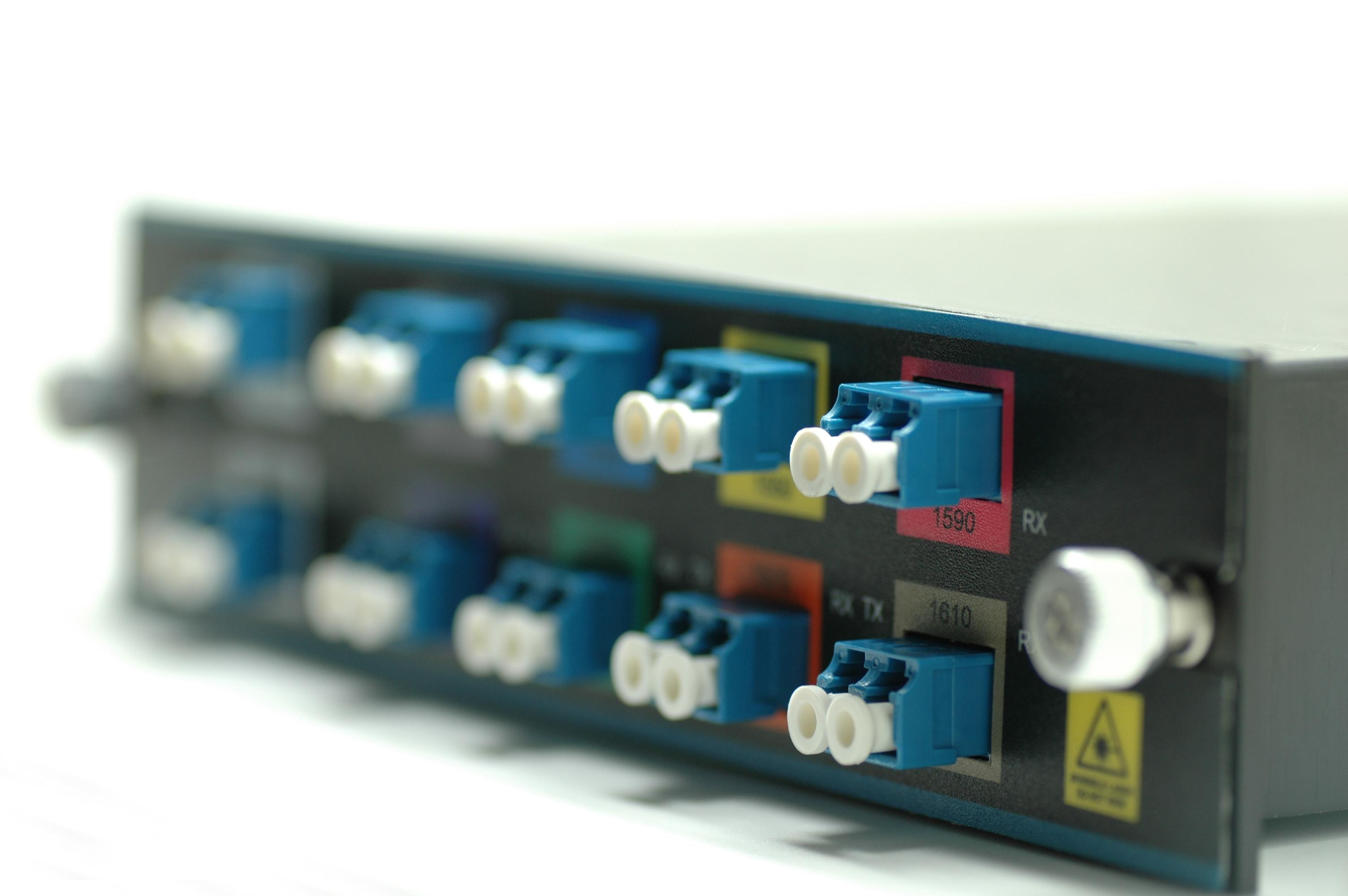In the WDM (wavelength-division multiplexing) system, CWDM (coarse wavelength-division multiplexing) and DWDM (dense wavelength-division multiplexing) Mux/Demux (multiplexer/demultiplexer) modules are often deployed to join multiple wavelengths onto a single fiber. Multiplexer is for combining signals together, while demultiplexer is for splitting signals apart. On a WDM Mux/Demux, there are many kinds of ports for different applications. This article will discuss the functions of these ports on WDM Mux/Demux.

Necessary Ports on WDM Mux/Demux
Channel port and line port are the necessary ports to support the basic function of WDM Mux/Demux to join or split signals in the data network.
A WDM Mux/Demux usually has several channel ports on different wavelengths. Each channel port works for a specific wavelength. Since there are 18 wavelengths of CWDM ranging from 1270 nm to 1610 nm with a 20nm interval, the number of channel ports on CWDM Mux/Demux also ranges from 2 to 18. DWDM has a more dense wavelength spacing of 0.8 nm (100 GHz) or 0.4 nm (50 GHz) ranging from S-Band to L-Band around 1490 nm to 1610 nm. The number of DWDM Mux/Demux channel ports is about 4 to 96 for high-density networks.
Each WDM Mux/Demux will have a line port connecting to the network backbone. Combined channels are transmitted or received at the line port. In addition, line port can be divided into dual-fiber and single-fiber types. Dual-fiber line port is used for bidirectional transmission, therefore the transmit and receive port in each duplex channel must support the same wavelength. However, single-fiber line port only supports one direction data flow, thus the transmit and receive port of duplex channel will support different wavelengths. The wavelengths’ order of single-fiber WDM MUX/DEMUX should be reversed at both sides of the network.
Special Ports on WDM Mux/Demux
Apart from the necessary ports, some special ports can also be found on WDM Mux/Demux for particular needs.
1310nm and 1550nm ports are certain wavelength ports. Since a lot of optical transceivers use these two wavelengths for long-haul network, adding these two ports when the device does not include these wavelengths is very important. CWDM Mux/Demux can add either type of wavelength ports, but the wavelengths which are 0 to 40 nm higher or lower than 1310 nm or 1550 nm cannot be added to the device. However, DWDM Mux/Demux can only add 1310nm port.
Expansion port can be added on both CWDM and DWDM Mux/Demux modules. This is a special port to increase the number of available channels carried in the network. That is to say, when a WDM Mux/Demux can not meet all the wavelength needs, it is necessary to use the expansion port to add different wavelengths by connecting to another WDM Mux/Demux’s line port.
Monitor port is used for signal monitoring or testing. Network administrators will connect this port to the measurement or monitoring equipment to inspect whether the signal is running normally without interrupting the existing network.
Conclusion
From this post, we can know that a WDM Mux/Demux has multiple types of ports. Channel and line ports are integral ports for normal operation of the WDM Mux/Demux. 1310nm port, 1510nm port, expansion port and monitor port are used for special requests of the WDM application. Hence, you should have a thorough consideration of your project before choosing the WDM Mux/Demux module.
Related Articles:
18 Channel CWDM Mux/Demux for 10G Network
What Is DWDM?

